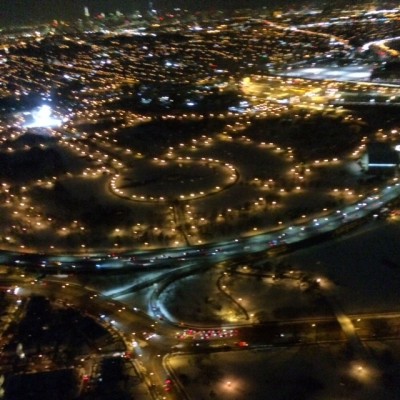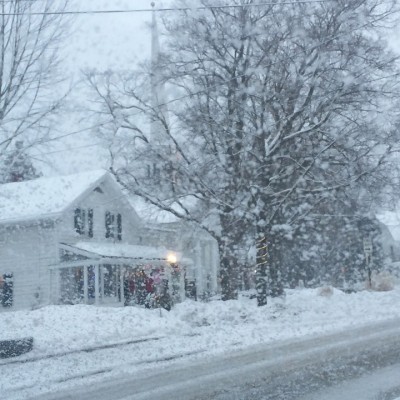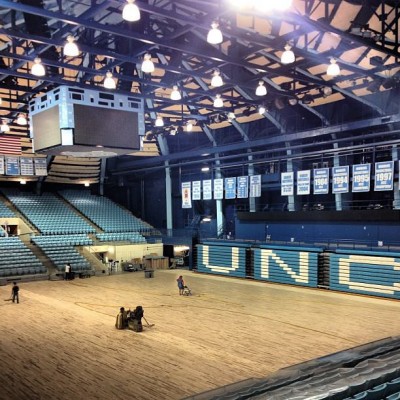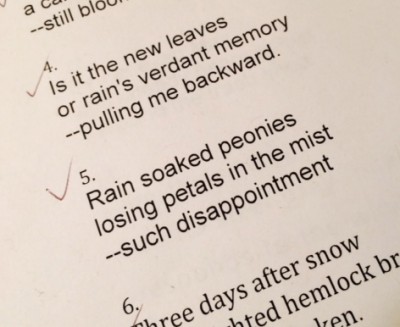For a few days, I escaped snow and ice. On the way home, I watched clouds turn to city.

~Sunset over the East Coast.

~Queens, NYC.
For a few days, I escaped snow and ice. On the way home, I watched clouds turn to city.

~Sunset over the East Coast.

~Queens, NYC.
Cathedrals of snow
those melting spires of winter
–unearthing parked cars.

Tinker Street. Woodstock, NY. 5pm.
 Carmichael Auditorium. Michael Jordan’s home court at UNC. This was Dean’s house before the Dean Dome. I shot this photo a couple of summers ago when I was visiting Chapel Hill. In the empty gym, while watching some renovations, I remembered my first Carolina game with my dad, a Morehead Scholarship nominee and graduate, who saw his peers win the National Title in 1957 in the adjacent Woolen Gym. I remembered when I ran with the women’s varsity on this court in Carmichael. I remembered watching Jordan become the player who would soon change the game and the marketing of the game forever. I remembered the sound of cheering Tar Heels, echoed through the rafters, across banners and the years since I graduated.
Carmichael Auditorium. Michael Jordan’s home court at UNC. This was Dean’s house before the Dean Dome. I shot this photo a couple of summers ago when I was visiting Chapel Hill. In the empty gym, while watching some renovations, I remembered my first Carolina game with my dad, a Morehead Scholarship nominee and graduate, who saw his peers win the National Title in 1957 in the adjacent Woolen Gym. I remembered when I ran with the women’s varsity on this court in Carmichael. I remembered watching Jordan become the player who would soon change the game and the marketing of the game forever. I remembered the sound of cheering Tar Heels, echoed through the rafters, across banners and the years since I graduated.
In 1986, the Heels moved to a massive structure named after Coach Smith. But Carmichael, seating just over 10,000 and rumored to be one of the loudest home courts in college basketball, was where so much of the magic happened. Arguably, there’s never been another player at Carolina like Jordan. There’s never been another coach, anywhere, like Dean Smith. A no-nonsense leader who loved and respected the game. So, while the Dean Dome sits tall just down the road, majestic on its hill, Carmichael will always be, in my memory and stories, Dean’s House.
Monday night, riding to Brooklyn hours after another NYC snowstorm, the city slows. Through taxi windows, graffiti and plowed streets. New York’s poetry.

Canal Street

Manhattan Bridge

Brooklyn Fence
Field like a valley / cradled between corporate / –whim and hard-earned sweat.
~Super Bowl Haiku.
Writing about the everyday, putting pen to page and watching a snapshot of living, a moment unfolding like a developing Polaroid, appear in front to me—this is how I describe the paractice of haiku. Years ago, I went to Taos, New Mexico, and studied with the writer Natalie Goldberg. I’d found her book, WRITING DOWN THE BONES, and had begun a daily writing practice, something revolutionary for me in its simplicity. Write about the barely-noticed aspects of your life, drop down into the details of it, the life you are in now. In that book, Goldberg credits writer and poet Erica Jong‘s FRUITS AND VEGETABLES as being a catalyst for her own work. When she first came across Jong’s book, Goldberg was working in a restaurant:
“One day I was cooking ratatouille, and I was cutting up eggplant and onions all day. At the end of the day, I went to the bookstore and I saw a thin volume of poetry by Erica Jong called Fruits and Vegetables. The first poem I read was about cooking an onion. I didn’t know you could write a poem about something that ordinary. It was what I’d been doing all day. And with that, I was ready.” *
So my own life, my interests, my obsessions, my daily actions can be the way into a very personal, sustained writing practice. Haiku, with its twisting third line, its brevity, its spiritual slant of nature, works well for me as one aspect of that writing practice. Things move fast in New York City. I notice and I write. And having been an athlete, the Super Bowl is poetry. For writers—everything is really.
*Quote from the blog, Reflection’s Edge.

Looking back over the poems I wrote in 2014 for the poem-a-day project, I’m so happy I said yes to the offer to hang out with other writers on the web and make poems for a year. We created an awesome body of work. Last week as I edited, choosing poems to submit to the anthology, I thought about how close in tone they seem to my documentary photographs. I’m looking forward to reading our final product, the moments documented by other poets, this time last year strangers, now valued collaborators.
Following relics
we sift lineage and time
to write new stories.